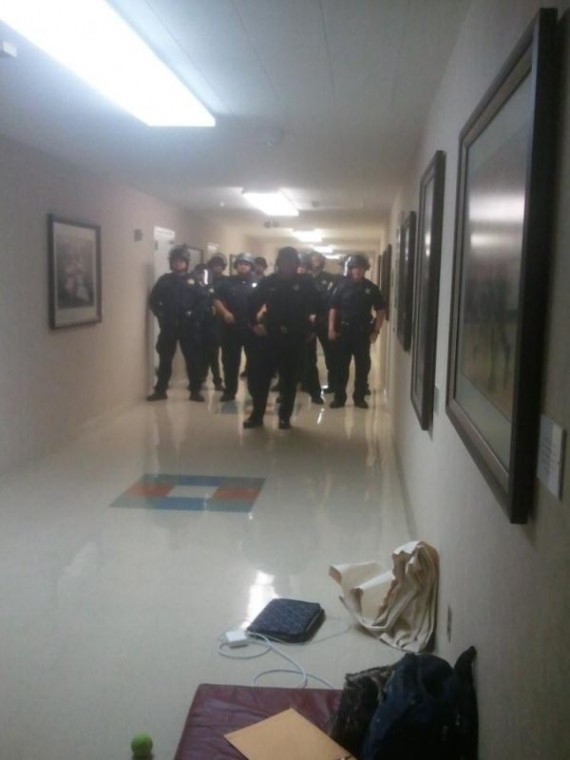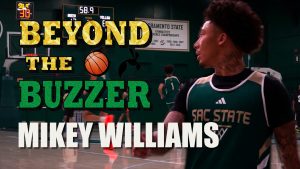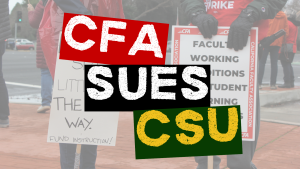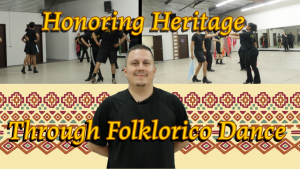Spring 2011 semester in review
Police in riot gear at Sacramento Hall:Police in riot gear stand in Sacramento Hall in preparation of removing students.:Courtesy of sit-in organizers
June 1, 2011
Student protesters removed from Sacramento Hall
Under threat of arrest by Sacramento State police and San Francisco State police in riot gear, students occupying Sacramento Hall were asked to leave the building early on the morning of April 16.
The students were there protesting the priorities of the administration, budget cuts and fee hikes.
In total, 40 students from Sac State, San Jose State, Humboldt State, San Francisco State, UC Santa Cruz, UC Davis and UC Berkeley were involved, with 20 participating in the sleep-in on Friday, April 15, until being asked to leave at around three in the morning.
Student organizer Amanda Mooers, senior sociology major, about 30 minutes after midnight, five police officers came in. Unlike the first day of the sleep-in on April 14, the police began restricting entry into the building.
No one could re-enter the building and food and supplies were not allowed in, Mooers said.
Mildred Garcia Gomez, junior social work major, said she went to the April 13 rally for a government class and found herself sleeping in on that Friday.
The doors were unlocked by 15 police officers in riot gear with zip ties in their pockets, Gomez said.
Police liason Yeimi Lopez, senior intercultural and international communications major, asked the police why they were unlocking the doors and they told her she would be receiving a call.
After that the police said the students would be arrested if they did not leave in the next five minutes.
Students at the sleep-in said the police videotaped the incident in case students acted violently. The students responded by taking photographs and recording the police as they came down the stairs from the upper floor in the building.
“I felt like this was a victory because all we wanted was the leadership of (Sac State) President Alexander Gonzalez,” Gomez said. “Instead of being a leader, he sent out a SWAT team.”
Kim Nava, Sac State spokeswoman, said the police’s riot gear was standard for the officers’ own safety.
The university’s concern was for the students’ health and safety since there was no heating or ventilation and the building would be locked all weekend, Nava said.
“Three days was not a healthy environment,” she said
The following Friday, April 15, Gonzalez issued his response to student demands in a press release.
He said as president, his public support was limited to those of the Board of Trustees. He also stated he and the California State University system must maintain that private donor information students wanted because donors would be less likely to give money for student scholarships.
Students began organizing the following day with their next action, “The Death of Education; the Rebirth of Our Movement,” a vigil for higher education that took place on April 19.
The vigil was organized to mourn the death of funding for higher education for the CSU system and to honor the rebirth of the student movement to protest the educational funding situation, according to the Sacramento State Coalition.
Students march, sleep in protest of CSUS cutbacks
A group of students from varying backgrounds and majors took part in the “Take Class Action Walkout,” a demonstration advocated for changes in management of the university on April 13.
Around 1,000 Sac State students took part, where they marched from the Library Quad to Sacramento Hall chanting, “They say cutbacks. We say fight back!”
This was part of a larger mobilization of CSU campuses to demand quality education. Rallies were held at all 23 CSU campuses that day.
The march ended in the lobby of Sacramento Hall, where students spoke about how they had been personally affected by the actions of the administration. It was an intimate environment with everybody standing close to one another in unity.
Their passion and calls for action prompted the crowd to cheer, clap and whistle.
An estimated 900 letters signed by students, faculty and staff advocating for changes in the priorities of the CSU administration were delivered to Gonzalez’s office.
Requested changes included making class availability and instruction a higher priority.
Even those who could not fit into the building stood outside listening to speakers talk about current student issues, empowerment, and administrative demands.
As of 9 p.m. on April 13, 15 students were still occupying the lobby with the intention of staying the night.
Organizer Amanda Mooers, senior sociology major, said the intention was to occupy the building until they met with Gonzalez to go over the demands from students, faculty and staff.
Students for Quality Education said their request for a meeting with Gonzalez was left unanswered by vice president of Academic Affairs, Mike Lee.
Student organizer Yeimi Lopez, senior intercultural and international communications major, said the education of the youth is at stake.
“If our youth cannot get into the CSU system, they will be funneled into the prison system or lower-paying jobs,” Lopez said.
Addison Pressnalle Duff, senior sociology major, said she was disappointed in Gonzalez’s absence.
“I feel like to be most effective, he needs to know we’re here and he wasn’t here,” Duff said. “In order to negotiate something and not cause a scene, he needs to be with us instead of just coming to his office tomorrow.”
Duff said spending the night in Sacramento Hall is a great experience.
“We’re all from different walks of life and majors but we hold that communal solidarity,” Duff said.
14 officers give chief a vote of no confidence
Sacramento State police chief Daniel Davis was given a 14-1 vote of no confidence in early January at a union meeting due to disagreements over his management during a time of rising crime on campus.
This vote came in the aftermath of seven incidents of alleged sexual assault at the end of the fall semester. A few officers expressed their concern with the direction the police department was headed in with the spike of these incidents.
“Morale is at an all time low,” said Sac State police officer Jeff Solomon, president of the California Statewide Police Officers Association. “I have never seen a police department with morale this bad.”
Davis did not see it as appropriate for the other officers to publicly air their grievances about him at the union meeting.
“The focus of my day-to-day activities is the safety of the campus,” Davis said. “I have complete confidence in my staff to protect the safety of this campus regardless of whatever conflicts we have, but I don’t feel it is appropriate for us to air those in public.”
The other officers have had concerns about Davis’ direction in the past, but this time, their main concern was with his decision to increase management staff while not hiring more police officers.
In all, there are 21 police officers working for the campus police. This includes three lieutenants and Davis himself. A University Police Association press release said the Department of Justice recommends 2.3 patrol officers for every 1,000 people that a police department is tasked to protect.
Solomon said the police are severely understaffed in terms of patrol officers.
Sac State student dies while riding bike
Sacramento State senior psychology major Arlene Sasse died after being struck by a car while riding her bike early in the morning of April 1. She was 22 years old.
Sasse was heading southbound toward Carlson at 1:45 a.m. when she was hit by a vehicle driving westbound on J Street, said Sacramento Police Sgt. Norm Leong.
She was rushed to the UC Davis Medical Center after the accident, where she was later pronounced dead.
Sasse was hit by a 60-year-old woman who immediately pulled over after the accident. The driver said she did not see the bicyclist.
She worked as an office assistant at the Sac State Testing Center and planned on graduating May 20 with a degree in Psychology.
Sasse lived in the Bay Area city of Albany and growing up was an avid volleyball player, playing for the Albany High School team and the Golden Bear Volleyball Club in Berkeley
Rachel Crossman, a close friend of Sasse and her family, said she was born in the Netherlands, and later moved to the U.S. when she was 3 so her father could take a research position at UC Berkeley.
Crossman said that Sasse loved music and taught herself the guitar.
“She was a vibrant and vivacious girl,” Crossman said. “She has left tears of shock and sorrow among strong young men, of heartbreak and loss in her family. Throughout our kids’ high school years, Arlene was the funny, polite, sweet one who was always playing volleyball.”
Crossman said she will never forget when Sasse helped build a stage for her son’s backyard punk rock show.
“She took the stage in unforgettable style, rocked with the boys, and was a delightful girl,” Crossman said.
A service was held April 5 at the Sacramento Memorial Lawn.
On April 4, students wrote words of comfort on a banner that was set up in the University Union to remember and honor Sasse.
Lucy Clem, junior health science major, who knew Sasse at the testing center, set up the banner.
“When I met her in the Testing Center, she was always helpful. She was above and beyond helpful,” Clem said.
The banner was up for a week, and then given to Sasse’s parents.
“If it was my sister, I would feel honored that people cared enough about my sister that they would write something to help us heal from the wounds of this,” Clem said.
Chelsea Castillo, sophomore psychology major, signed the banner even though she did not personally know Sasse.
“I just feel for her family and I think they should see something like this,” Castillo said. “I think it’s amazing that people are getting together and showing support for her, even though they didn’t know her, like me.”
Hit especially hard by her death was senior psychology major Tessa Thomas, who planned to graduate alongside Sasse on May 20.
“I just met her in my multicultural psychology class but because of the nature of the course we shared a lot with each other. I felt like she and I were getting to be good friends,” Thomas said.
Thomas said Sasse will be remembered as someone who thought a lot about her place in the world.
“She was wonderfully intelligent,” Thomas said. “She contributed a lot to our discussions in the course. She was a very deep thinker. I will really miss her presence because she had a really strong presence.”
Clem said the banner was set up with that exact purpose in mind.
“I feel blessed that people care enough to want to honor her because I think all people need to be honored,” Clem said. “Her life was cut short, way too short. Twenty-two years old and graduating in May. It just makes my heart bleed.”
Thomas attended the April 5 memorial and said the service completely honored Sasse as a person.
“You could tell that her personality really was expressed,” Thomas said. “There were beautiful flower displays there. Her family really did a nice service. She had a lot of friends and family there.”
Students reach plan of action for administration
College students from all across the state worked together April 18 to sign letters to administration after their three-day occupation of the administration building in Sacramento Hall at Sac State.
This came together after the April 13 “Day of Class Action Walkout,” where police were called when an estimated 1,000 or more students, faculty and staff walked out of their classes in protest, demanding higher quality education.
Student organizer Amanda Mooers, senior sociology major, led the beginning of the meeting with students.
“We are going to ask people to sign letters to President (Alexander) Gonzalez that they support the students organizing and in response to the administrations actions, which were unnecessarily aggressive,” Mooers said. “We have real power and the influence to yield after this.”
Jose Nava, freshman political science and pre-law major, came from Fresno State to the organizing meeting that day and found Sac State to be a motivation.
“I see it as an inspiration to students taking action against cuts I pay out of my pocket. We’re not going to take this anymore.” Nava said. “Sac State showed that we’re not scared, we’re going to take action. All the CSUs came together and echoed the voices of Sac State throughout the whole state.”
Now, a campus community forum is in the works to educate people about the occupation of Sacramento Hall and how students can contribute to the student movement on campus.
Mildred Garcia Gomez, junior social work major, said the students will not give up.
“Something will happen. Next we’re going to keep fighting and pushing the limits so they hear our voice that we are here,” Gomez said.
Students studying in Japan return home
Three Sacramento State students studying abroad returned home under orders from California State University Chancellor Charles Reed on March 15.
All of the colleges within the CSU system with students in the who were studying in Japan were asked to send those students home following Japan’s 9.0 magnitude earthquake and subsequent tsunami. Reed issued the order out of concern of the students’ health and safety.
Although students studying in Japan were not in areas directly affected by the earthquake or tsunami, leaving students in such an uncertain situation is not a risk he is willing to take, according to Reed’s statement.
Because the U.S. State Department issued a travel warning for Japan, no students were able to study in Japan for the spring 2011 semester.
Students march on state capitol
Sacramento State students and faculty were joined by California’s community colleges and the University of California in the “March in March,” a protest in Sacramento’s midtown that eventually lead to a rally on the state Capitol.
On March 14, protesters gathered with signs and loudspeakers ready outside of the California Automobile Museum on Front Street. The protesters proceeded to march through the Capitol Mall until reaching the west steps of the state Capitol.
Gov. Jerry Brown proposed a budget that called for a cut of $1.4 billion across all higher education systems, which includes the $500 million budget cut to the California State University system.
The “March in March” has been held every year since 2008. This year’s march brought out an expected 18,000 students and faculty to protest the budget cuts and tuition hikes.
Nursing opens in new home
Folsom Hall, the new building used to house the Division of Nursing, opened up for use on Jan. 24. The 188,000-square-foot facility is located on the corner of Hornet Drive and Folsom Boulevard.
Folsom Hall was once a building for the California State Teacher’s Retirement System, before being purchased by University Enterprises, Inc. for $35.5 million in 2007. The Sac State Office of Public Affairs immediately announced the purchase, but it was unclear how the building would be used.
The building has triple the space of the nursing program’s previous location at El Dorado Hall. The nursing program now has access to six classrooms, two amphitheatres, five skill labs, six simulation labs and computer labs.
Ashley Jones, junior nursing major, said the new building allows her and other classmates the opportunity to spend more time in labs, along with a more comfortable workstation.
Impaction set to affect more majors
Sac State is facing impaction in the departments of criminal justice, health science and psychology for the fall 2012 semester, which is a result of student demand and budget cuts.
Impaction occurs any time there is a demand for a particular program that exceeds the university’s capacity to handle those students. Graphic design, interior design, nursing and the College of Business Administration are some of the programs already impacted at Sac State.
Joseph Sheley, provost and vice president of Academic Affairs, said criteria would be adopted for students to enter in the criminal justice, health sciences and psychology programs when operating under impaction status such as grade point average and background.
Many of the professors within these programs will have to increase their class sizes in order to accommodate students.
Student activity fees one-third of CSUS athletics revenue
The student activity fees that fund the Sacramento State athletics program have become its largest source of revenue, surpassing the declining support from the university.
The fees that support athletics increased $18 in the 2009-10 school year, increased another $22 this year, and are scheduled to increase an additional $22.50 for the 2011-12 school year – adding up to a total of $125 per student.
Sac State President Alexander Gonzalez implemented the scheduled fee increases in spite of a student vote that rejected the fee increases in April 2009. However, the vote was only advisory in nature, according to Gonzalez’s assistant John Kepley.
Despite the increase, the sports program was in a deficit $417,959 in the 2009-10 school year.
Brian Berger, media relations director for Sac State athletics, said the deficit was due to the new turf installed in the Hornet Stadium, which did not come out of student fees.























































































































